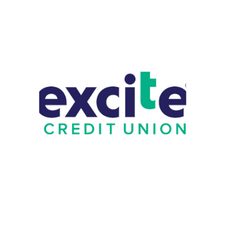In the world of Challenger Brands, the lines between B-to-B and B-to-C are blurring to the point where we believe there are no longer such designations. One thing we know to be true, no business has ever made a decision to work with another business. People within those businesses made the conscious decisions to work with the people in other businesses. At Gumas, we believe all business is H-to-H: Human-to-Human, and Challenger Brand Marketing must connect on a human level. One way we like to help traditionally labeled B-to-B organizations think more human-ly, is by running key team members through a branding exercise called, RetailVision.
We created RetailVision to help business leaders visualize their companies as if they were traditional retail operations. They are asked to picture their company with actual storefronts in busy shopping districts where prospective customers would travel from miles around to walk into their store and experience, on a human level, their business.
Meet MyRide
For purposes of illustration, meet our completely fictional “B-to-B” client, MyRide. MyRide is the world’s best private transportation service that provides large companies with the most efficient customized chartered car/van/bus/shuttle fleets in major markets throughout the US. MyRide contracts with large employers to shuttle staff members to/from their workplace on a daily basis. MyRide is the next big thing in privatized commute services.
The MyRide Store
In an effort to appropriately, meaningfully and emotionally brand the company, the imaginary executive team at MyRide has agreed to participate in a RetailVision exercise. We ask the leadership team to imagine MyRide as if it were a conventional retail establishment. The MyRide store is located in the middle of the busiest street in the heart of the city’s high-end shopping district. Right next door to MyRide, is their arch-competitor ShuttleCity and on the other side of MyRide is the gorilla brand in the category, CCS (Corporate Commute Services). Anyone interested in customized commute services, would come to this one city block where they could sample all the industry has to offer, face-to-face, human-to-human.
The MyRide Storefront
The branding exercise requires the executive team visualize the MyRide store in two ways, the exterior storefront and the interior layout. Focusing on the exterior, we would provide the team with a simple templatized drawing of a storefront, with doors, windows and a sign. There are no budget constraints; if the team can dream it up, they can build it in.
Remembering the MyRide store is in between two major competitors, it is critical that the executive team think in terms of what will it take to attract prospects in a competitive environment. We ask the team to create the façade of the MyRide store with special consideration to color, tone, texture, materials, etc. What will resonate with the prospect and draw them into the MyRide store as opposed to their competitors.
Now, think aesthetically. What would the doors look like? Wooden? Glass? Industrial? Automated? Perhaps, no doors at all?
What about the windows? Would they be standard? Can prospects see through? Would they be used for promotional purposes with banners streaming down?
And then there’s the sign. What will be displayed on the sign? Company name? Logo? Tagline? Will it be an old-school wooden sign? Brushed metal? Digital? Static? Movement? Lighted? What colors will be used?
The MyRide Interior
Once the exterior has been designed, the MyRide executive team now shifts its focus to the interior of the store. The team is given a simplified blueprint of the establishment that outlines the entrance/exit, walls, display/exhibit spaces, etc. The team must consider the experience a prospect has once entering the MyRide building.
Will the prospect be given a clear path to travel once inside? Will the visitor be free to wander on their own or must they be escorted by a MyRide ambassador? Where should that prospect go first? Head towards “education” and learn more about MyRide? Walk over to the display space to sample the products and services? Discuss pricing with a sales associate? Maybe even test drive a MyRide vehicle.
What’s the atmosphere like inside the MyRide store? Is there music playing; what style? Is there a coffee lounge or snack bar? What’s the lighting like; bright, muted? Flooring?
Most importantly, what do we want the prospect to do before they leave the store? Provide name and email address? Set up a follow-up meeting? Purchase something?
In many ways, RetailVision is as much a website design project as it is a brand visioning exercise. The storefront is the website homepage with the sign serving as the company’s positioning statement and the storefront’s look and feel translating simply to the homepage’s graphic tone. The interior of the store equates nicely to the user experience a website visitor would have once they click on the site. With the all-important call-to-action reflected on the homepage in the form of a “click-here” to receive our newsletter, schedule an appointment, view a video, etc.
One other important benefit of RetailVision is the activity’s ability to help organizations align their executive team such that their values and visions are in sync and allows the leadership team to march in greater rhythm towards their goals.
Visualizing your company in a retail environment can greatly help you better understand your competitive strengths, identify branding needs and make your organization more human. If you could use some assistance putting your leadership team through a RetailVision exercise, please contact us at editor@gumas.com.
Until next time…









